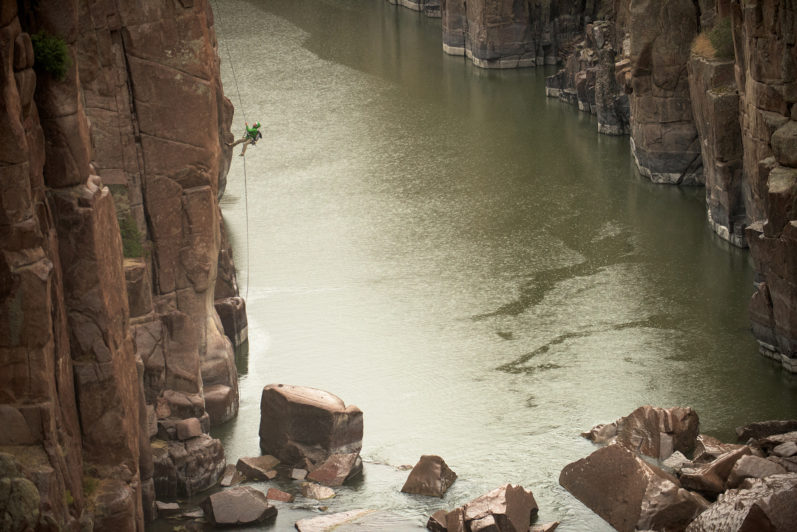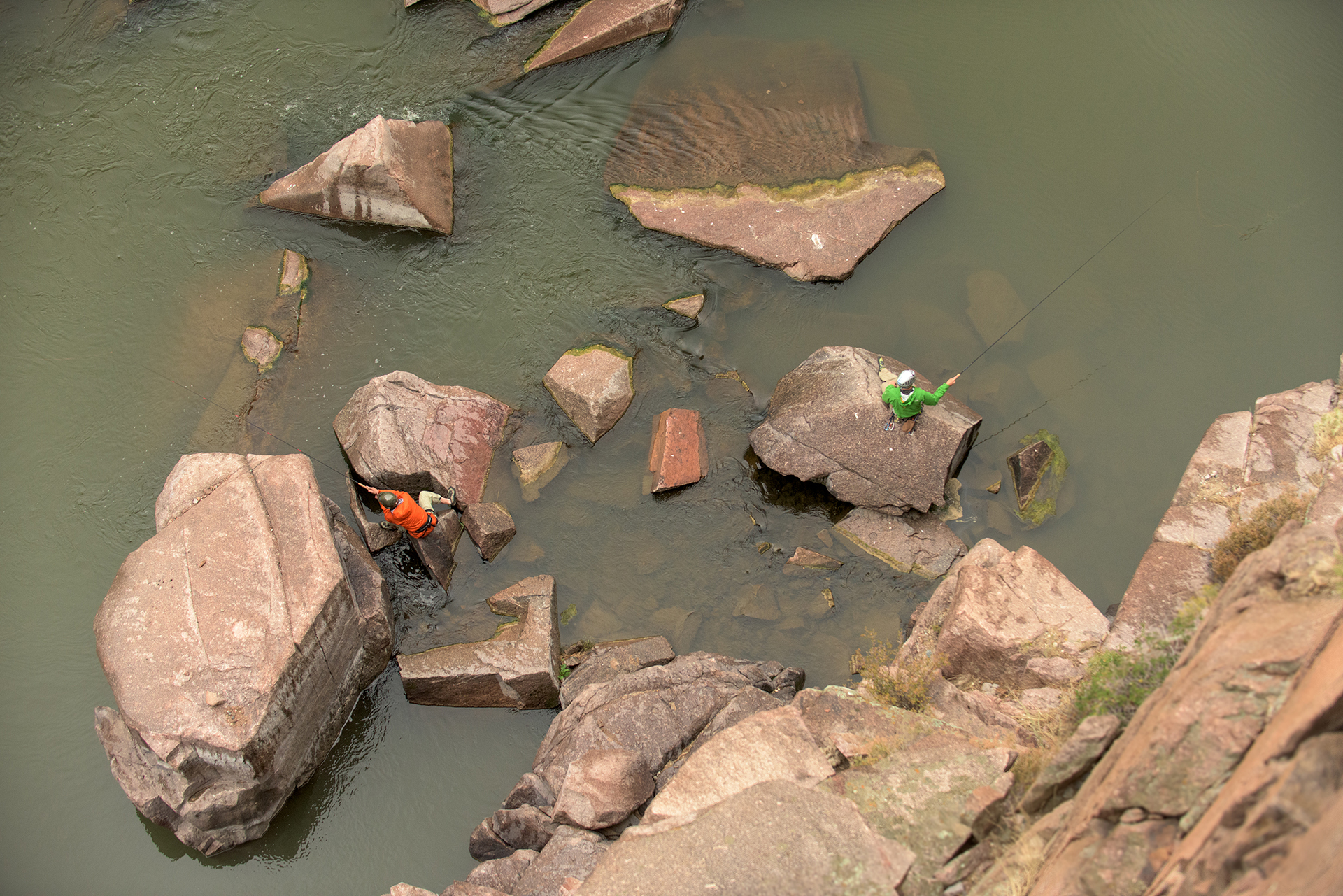Cutbank
From The Heavens
I was standing on the edge of a cliff with Steve Conrad looking at our objective—the North Platte River—way, way down below us. The fishing is excellent upstream, but we wanted to know if it was even better here, where we imagined no one had ever fished before. Our transport would consist of climbing ropes and rappel devices. Our weapons of choice were the tenkara rods we carried in our packs, which would be easy to assemble and quick to deploy. It was a stealth invasion.
Tenkara is translated from the Japanese as, “from the heavens.” Rappelling into the North Platte, the phrase struck me as particularly appropriate—and perhaps inevitable since I have two obsessions: tenkara fishing and rock climbing, and this part of Wyoming offers the best of both.
The draw of the adventure and the potential for never-before-hooked fish compels me to combine both activities when I can. Years ago I indulged in what’s called “shower climbing” in Japan, climbing and rappelling through narrow river gorges with my tenkara rod, fishing at every promising spot along the way. (See The Flyfish Journal 3.3, “Flies From Heaven”). I have done that a few more times since. I have also spent some time exploring wet canyons in North Carolina, and planning a similar endeavor at a remote and narrow river canyon in California.
None of my previous adventures, however, made me confront such sheer walls. This was very real and, if we were not careful, very dangerous. The granite face was perfectly vertical. Below, there were only precarious perches on scattered and uneven boulders. Unlike fishing in the meadow a mile upstream, which allows us to change locations when the fish in a pool don’t want to take a fly, or to position ourselves to land the large fish, here we would be stuck, perched atop tiny islands with no real means of escape should something go wrong.
The fun began atop the cliff and it involved a lot more gear than fishing requires. In contrast with a 2.5oz rod, spool of line, tippet and a dozen flies, to make this possible we also had to rely on several pounds of carabineers, cord, rappel device and rope, not to mention climbing shoes, harness and helmet. Perhaps because my other activities are so gear-intensive, I keep my flyfishing simple.
I setup an anchor by attaching cord to two different points, taking care to have the impending weight evenly distributed between them—if one point were to fail, the other would catch—hopefully.
“Well,” Steve said, “I guess we will find out if the rope is long enough.”
My rope would allow me to rappel 115 feet—maybe 120 with rope stretch. I had no idea how far down the river was, but there was just one way to find out. I threw the rope and in seconds heard the reassuring splash. At least we wouldn’t risk getting stuck in mid-air at the end of the rope.
Attached to the rope via a harness and hardware, I stepped over the edge and started the descent. As I lowered into the canyon, I split my attention between the rappel, reading the rock face I was going to have to climb to get back up, and the water features below.
“Well,” Steve said, “I guess we will find out if the rope is long enough.”
ABOVE Limited to just a few accessible casting positions, Daniel Galhardo (right) and Steve Conrad fish opposite each other. Do to the tight spaces and the wary trout, casts had to be stealthy and accurate.
The spot where I landed turned out to not only provide one of the only places in the area conducive to standing, but it also created some of the only fishy looking features in this stretch of river. Our half-dozen tiny islands created current breaks that funneled food and provided calm pools for trout to hang out. The water was murky but readable and deep.
Steve was the first to catch a fish, and the first trout of the day turned out to be the largest. As the fish took, his rod bent deeply. Steve held on tight. I thought of writer Ryan Jordan’s description of tenkara: “If you think roping a bull in a cattle chute with a piece of dental floss sounds totally cool, then you’ll really like tenkara flyfishing.”
Fishing here was not an individual sport. Not only would we have to work closely together to stay safe when rappelling and climbing, but it was devilishly hard to land the fish alone. We were compelled to boulder hop, stretch and lay on rocks to net fish. Teamwork was everything
Salvation came from the fact that by using a rod without a reel or running line we were forced to hold on tight and, in turn, the fish were forced to battle in relatively small areas. Had they been allowed to run downstream and around the boulders, I have no idea how we would have brought them to hand.
After catching a few fish, our thoughts turned to finding the line of least resistance up the canyon. We eyeballed the features on the cliff and picked a crack on the rock face to climb. We collapsed the tenkara rods, tied the ropes to our harnesses and started climbing.
Reaching the top of the cliff, we could look down, wondering how long it would be before those trout saw another angler descend from the heavens.
This story originally appeared in The Flyfish Journal Volume 8 Issue 1.

